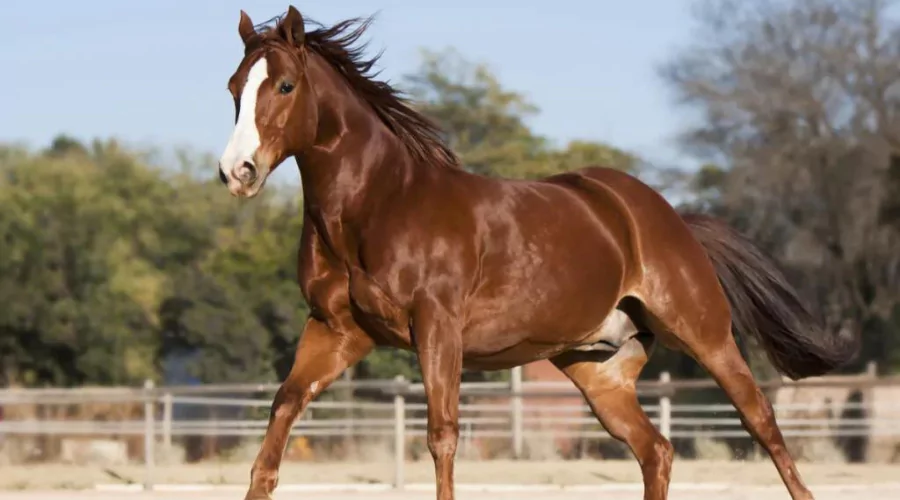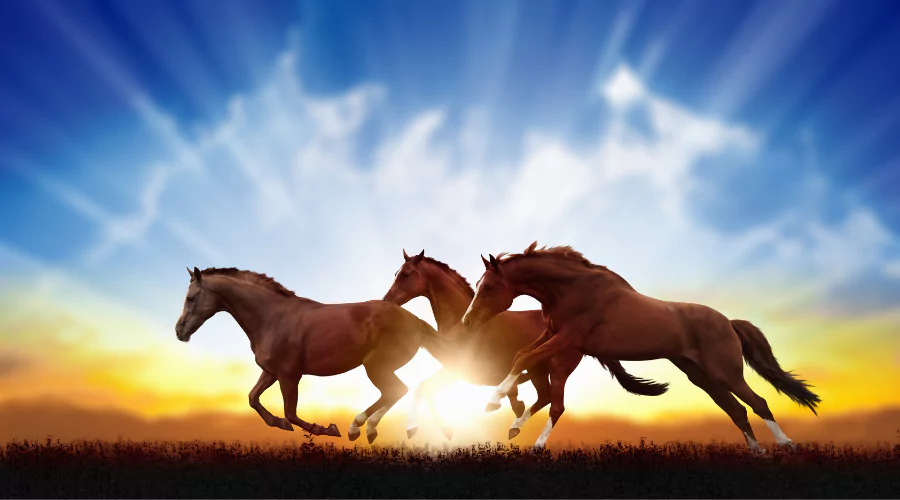Mexico, where horse-drawn traditions amalgamate with vast vistas, is an equestrian heaven. This fascinating land features a tapestry of horse breeds that have flourished among the strong culture and history. From the majestic Azteca to the quick and clever Criollo, Mexico’s equine legacy is carved with stories of conquests, migrations, and these four-legged creatures’ sheer grit and elegance. Gallop, through this complete information on Mexican horse breeds, is a treasure mine of distinction within the equestrian world.
Historical Traces of Horses Gallop into Mexican Soil
The wonderful story of Mexican horse breeds is as ancient as time. Historically, this area has been a fruitful environment for equestrian activity, and horses have been a vital part of Mexican society for ages. The Spanish conquistadors are credited for the introduction of horses to Mexico, the region where their history would be reinterpreted, polished, and appreciated.
From the first time their hooves stamped the Mexican land, horses were the companions of the Aztecs and, after that, the icon of Mexican identity. The mixing of Spanish horses with the indigenous stock led to the birth of outstanding breeds especially fitted to the Mexican landscape and the spirit of its people.
A Closer Look at Mexican Horse Breeds
Diversity is the trademark of Mexican horse breeds, and their flexibility knows no boundaries. Each breed is a monument to the persistence of Mexico’s equestrian culture, balancing an assortment of qualities and temperaments that make them ideal assets in numerous horse hobbies.

Azteca – The Sovereign Blend
One of the most cherished breeds with a heritage based on monarchy is the Aztecs. A blending of Andalusian blood with other Iberian breeds and the quarter horse, the Azteca is a symbol of magnificent beauty and agility. Known for their grace in classical dressage and their performance in the rejoneo, a sort of bullfighting on horseback, Aztecas reflect the dynamic elegance of Mexico’s equestrian nobility.

Criollo – The Stalwart of the Plains
A breed carved with the survival character, the Criollo has epitomized tenacity in the face of hardship. Originating from Spanish lineage, the Criollo was not cultivated for one aptitude but for hardiness. They are the ideals of endurance, adapting easily to Mexico’s severe terrains and weather. Criollos display unfaltering strength and resilience, whether tending cattle in the sierras or hauling the vaqueros over the interminable pampas.

The Mestengo – A Feral Legacy
Among the more remarkable parts of Mexican equine history is the legacy of the Mestengo, the wild horses descended from the Spanish Conquistadors’ stock. These wild spirits have traversed the broad fields, expressing the unbound freedom that horses signify. Mestengos are living relics, a connection to the past and the unrestrained future of Mexican riding.

The Mexican Charro Horse – A Performance Maestro
The Charro horse is not a different breed but a category that incorporates numerous Mexican horse types noted for their prowess in the Charreada, Mexico’s traditional rodeo. These horses must display intelligence, quickness, and a strong comprehension of their riders’ directions. They compete in remarkable feats such as the “coleadero,” when a mounted rider must bring a bull to a standstill using just a rope.
The Role of Horses in Mexican Culture
Mexican horse breeds transcend usefulness; they are cultural symbols that connect with the heart of Mexico. They play crucial parts in festivities, movies, and music, epitomizing the passion and adventure the Mexican spirit seeks. Horses have been vital in holidays like the Day of the Dead, Semana Santa, and the revolutionary commemorations, their clatter reflecting celebratory zeal and historical echoes equally.
The Golden Age of Mexican Cinema and Horses
Mexican cinema’s golden period was blessed by the presence of strong horse stars, appreciated by the viewers as much as the human ones. Horses in movies like “Allá en el Rancho Grande” typified a national cinema that depicted Mexican rural life through the perspective of romance and nostalgia. These horse thespians grabbed the minds of spectators and were associated with the Mexicanness represented on the silver screen.
The Melodic Tale: Horses in Mexican Music
Horses gallop through the verses of ranchera music and corridos, becoming muses who inspire lively rhythms and lyrics that grieve lost love, heroic rebels, and famous horses themselves. Singers like Vicente Fernández and Antonio Aguilar, typically seen astride beautiful steeds, have raised the horse’s stature to a cultural emblem snugly nested in the heart of Latin music.
Mexican Horse Traditions in the Modern Era
As the world develops, so do the traditions they hold dear. The Mexican equestrian sector has experienced a rebirth in respect of its native horse breeds. Modern procedures and breeding strategies are maintaining the integrity and tradition of Mexican horse breeds, ensuring they continue to be a source of national pride and a worldwide equestrian wonder.
The Spectacle and Skill of Charreada
The Charreada, Mexico’s national sport that lives a universe of its own, continues to flourish and fascinate with its demonstrations of excellent horsemanship and daring deeds. Charros and their mounts move with synchronized precision, balancing between athletic displays and cultural storytelling that bring history to life in the current moment.
The Modern Renaissance of the Aztecs and Criollo
From traditional exhibits to competitive show circuits, Azteca and Criollo horses are making a resurgence in the limelight. With structured groups and an upswing of interest in their extraordinary features, these breeds are finding new fans, both inside Mexico and beyond. Equestrian centers and training facilities sharpening the talents of these wonderful creatures appeal to a rising populace eager to engage in the tradition they hold.
FAQs
How Do You Differentiate Between Various Mexican Horse Breeds?
Different Mexican horse breeds are recognizable by their physical traits, temperament, and the historical background of their breeding. For instance, Aztecs are recognized for their robust physique, great intellect, and mild demeanor, inherited from their Andalusian origin. Criollos, on the other hand, are small, nimble, and known for their ability to tolerate harsh circumstances, reflecting the strength necessary for colonial Mexico. Understanding these variances increases the understanding of each breed’s specific purpose.
Can Anyone Ride a Mexican Horse?
Riding a Mexican horse demands an awareness of their particular requirements and training histories. While certain breeds, such as the Azteca and Charro horse, are well-suited for many skill levels, including novices, the Mestengo may be tough owing to its untamed character. Proper training and respect for these creatures’ capabilities are crucial to creating a happy and safe rider-horse connection.
Are Mexican Horses Available for Adoption or Rescue?
Yes, Mexican horses, notably the Mestengo, may be found in rescue and adoption groups that aim toward conserving and rehabilitating wild or neglected equines. These programs are vital for the preservation of the breed and allow enthusiasts the chance to make a difference in the lives of these beautiful creatures.
What are Some Famous Mexican Horse Names?
Famous names that resonate through the annals of Mexican equestrian history include names like as “Espíritu”, the fabled Azteca horse, and “Tangananita”, a great Criollo mare noted for her speed and agility. These horses and many more have become emblematic of Mexican horsemanship and national pride.
How do Mexican Horses Differ from Other Breeds?
Mexican horses typically stand out owing to their unusual combination of Spanish and Iberian genetics. This bloodline has developed equines who usually feature a powerful frame, a calm disposition, and an inherent knowledge of their rider – attributes that make them great companions for a multitude of equestrian sports.
What Role Do Mexican Horses Play in Modern Mexico?
Even in modern Mexico, the function of horses remains crucial. From their enduring relevance in traditional celebrations like the Day of the Charro to their practical responsibilities on cattle ranches and as a crucial part of the Mexican police and military, horses in Mexico remain important.
Conclusion:
Mexican horse breeds are more than simply animals; they are caretakers of a tradition that extends as deep as the annals of Mexican history. They epitomize the country’s spirit of perseverance and elegance, representing a narrative of sovereignty intertwined with every hoof beat. As Mexico’s equestrian tale continues to evolve, the heritage of these majestic beasts reigns supreme, their presence an indestructible force beneath the Mexican heat. Whether in the lonely grandeur of the Mexican desert or the busy city streets, horses in Mexico serve as proud emblems of the nation’s power, enthusiasm, and time-honored history.
